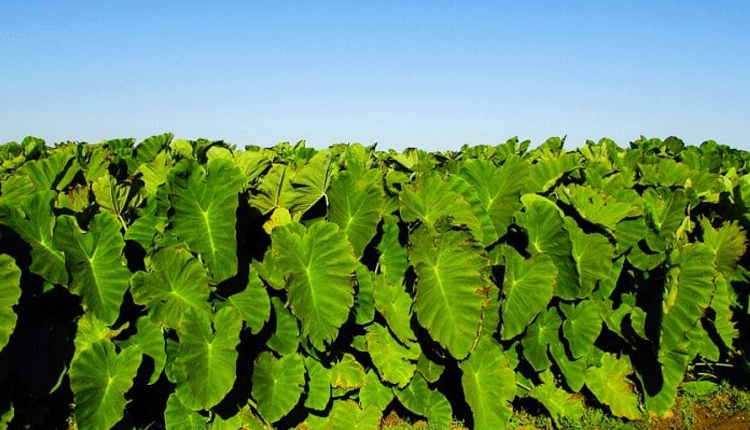Arrow roots, the buried gold

The demand for wholesome foods and African dishes has risen in the recent past due to the increased awareness on importance of healthy foods among citizens.
Many are opting out of eating pancakes, sausages, and bread for breakfast and instead choosing to eat boiled arrow roots, commonly referred to as nduma.
George Gitonga Kairithia saw this trend, anticipated demand and decided to start growing arrow roots. Gitonga is one hardworking man.
He is the headteacher of MCK Chaaria Township Boarding and Day Primary School in Meru.
He has also written and co-written numerous books under Oxford University Press, all while having a thriving farming business.
Being a teacher, he knows the value of knowledge and gladly shares it. This is the reason he started Arrow roots Farmers in Kenya, a Facebook group that seeks to offer insights into arrow root farming, trade farming tips and marketing advice while at it.
Gitonga has hosted numerous group members at his farm as a way of sharing knowledge and encouraging those hesitant to start to just do it.
But what prompted Gitonga to start arrow root farming? “Fear of poverty. I come from a humble background.
I know for a fact that one cannot rely on one source of income if they are to outrun poverty. So eight years ago, I bought a four acre piece of land in Meru.
Part of the land was next to a swamp, which is great for growing traditional arrowroots.
My late mum and my wife encouraged me to try my hand at arrow root farming and since I began this venture, I have never looked back.
I intend to keep farming arrow roots and at some point change the farm into a research facility,” Gitonga candidly says.
He shares that while traditional arrow root variants had to be grown in a swampy place or a place with a lot of water, there are new variants that can be grown anywhere through irrigation.
Many farmers who have land away from riverbeds and swamps dig trenches that flow with water, which is needed as the arrowroots grow.
He shares that arrow roots are easy to grow as they require little management despite maturing in six to eight months depending on the variety planted.
The farming process
In Kenya, there are two main variants, dasheen and the traditional arrow roots also referred to as eddoe.
Dasheen can grow almost anywhere if properly irrigated while the traditional arrow root best grows in riverbeds and swampy areas.
“Prepare the land by tilling, so that the soil is loose and soft. Make holes that are about 15 centimetres in diameter and depth, and about 30 centimetres from each other.
The distance from each other should not be too far apart so that the leaves grow and form a canopy thereby blocking the sun from reaching the ground.
They should not be too close together as the arrow roots will not have enough space to grow to their full potential. Next, fill the hole about halfway through with organic manure.
The use of fertilizer is not advised. Keep the soil moist throughout the growing period.
Regularly water the tubers, at least twice per week and weed appropriately,” Gitonga explains.
There are no known diseases that affect arrow roots. As for pests, one can spray pesticides after consulting a local extension officer.
Harvest and market
It is important to know when to harvest your arrow roots since when they overstay in the ground in a well-watered area, they start retaining water and become spongy and not as crunchy as they should be when cooked.
The arrow roots turn yellow and stop growing when they are ready to be harvested.
They normally weigh between two kilogrammes and five kilogrammes depending on the variety planted.
One harvests arrow roots by wetting the ground so the tubers can be easily uprooted.
The arrow root is then cut from the plant and the plant can be used in the next planting season.
There is a ready market. A quarter-acre can give over 5,000 kilogrammes of arrowroots that can fetch between Sh250,000 to Sh300,000 per harvest.
With an acre, one can easily clock a million shillings upon hitting the market, which is why many view it as the buried gold.
The common markets are hotels, weddings, breakfast caterers, and open-air markets.
The arrow root market is slowly growing as people add value to the produce by making crisps, flour used as infant food.
Gitonga maintains that demand for arrowroot can only grow as innovative ways of value-adding are discovered with each passing day.












